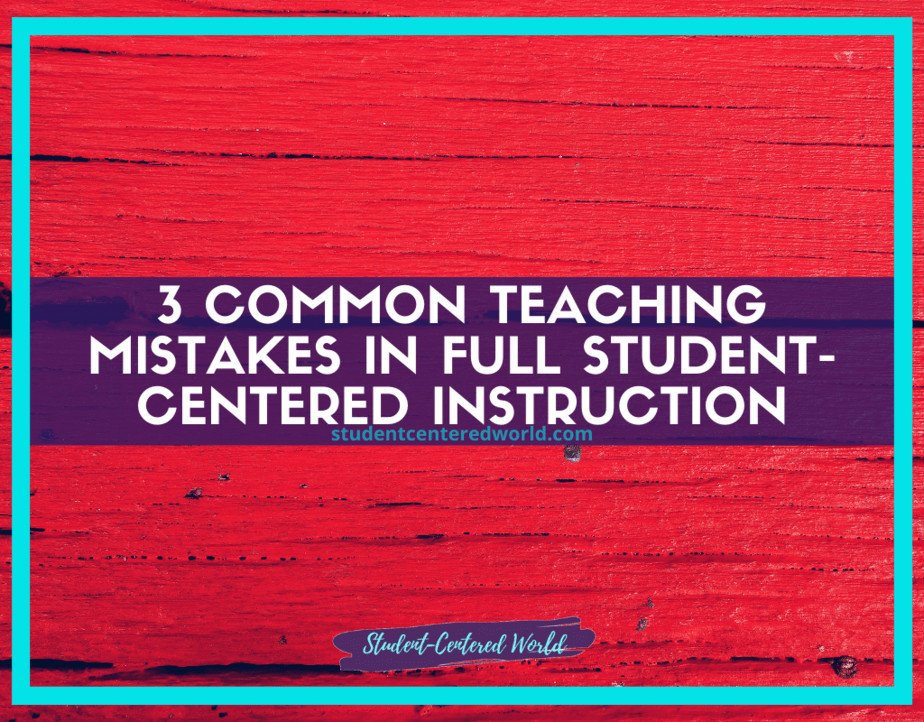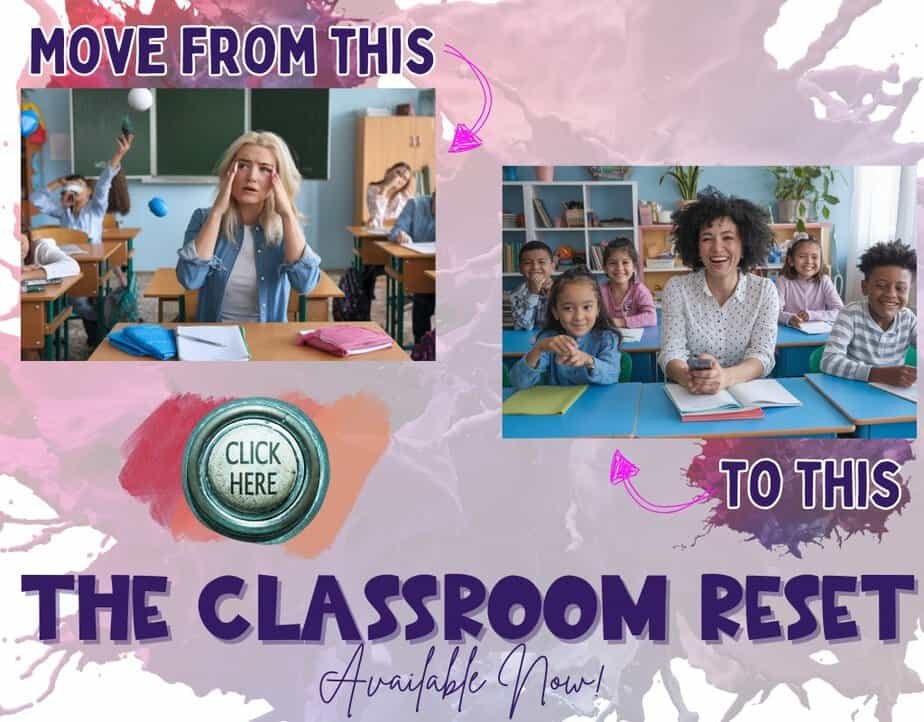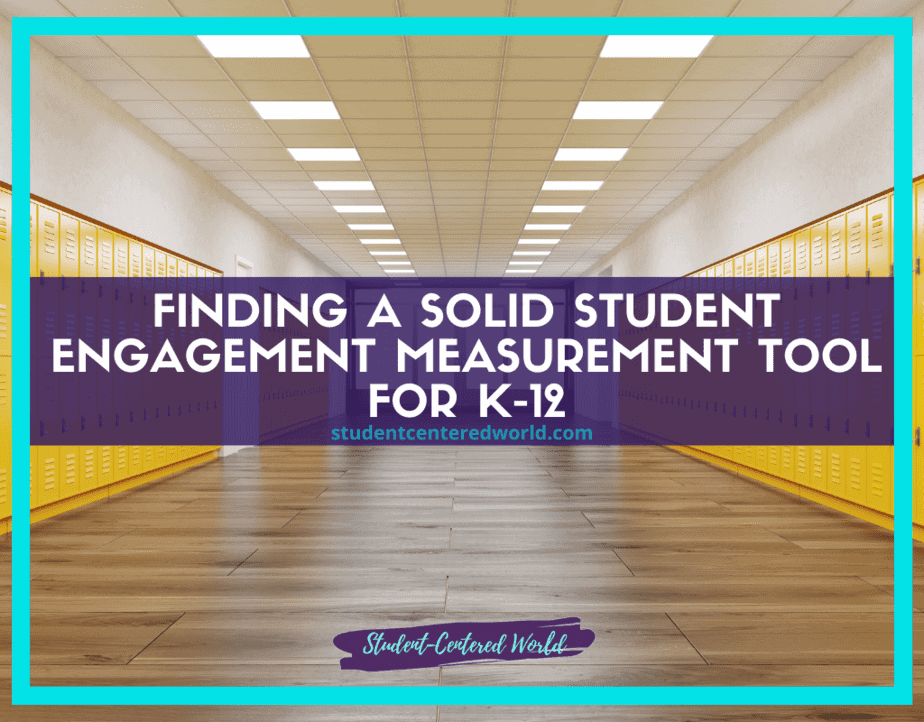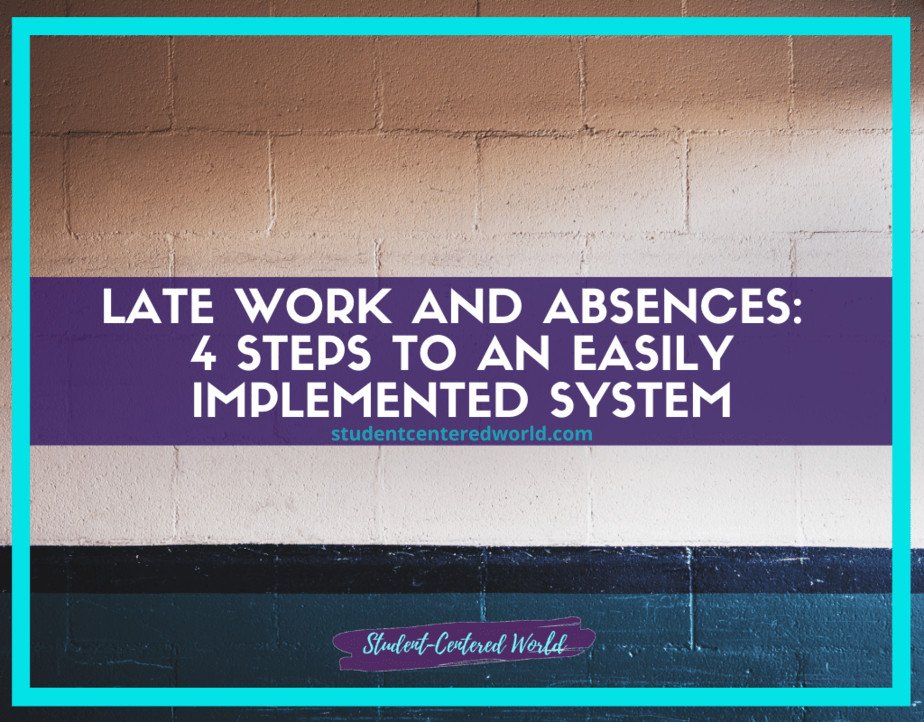Classroom STEM: How to Integrate STEAM Activities for Kids
Classroom STEM (Science, Technology, Engineering, and Mathematics) or STEAM (which includes the Arts) education has gained significant momentum in recent years. This interdisciplinary approach fosters critical thinking, collaboration, and problem-solving skills…essential competencies for the real world.
Why STEM Learning Matters
A STEM classroom is dynamic, student-centered, and often noisy because students are actively engaged in hands-on learning. Unlike a traditional classroom where rote learning dominates, STEM education emphasizes project-based learning, allowing students to explore new concepts through experimentation.
STEM Activities Across Subjects
STEM education isn’t confined to science or math; it can be seamlessly integrated into all subjects, including social studies, language arts, and even art. This interdisciplinary approach not only reinforces STEM concepts but also helps students see the real-world relevance of their learning.
Elementary School: Blending Science and Storytelling
In an elementary school setting, young children can explore science concepts through creative play. For example, using a light table, students can experiment with shadows and transparency, then craft stories based on their observations. This activity merges STEM learning with language arts, encouraging both critical thinking and narrative skills.
Teachers can extend the lesson by having students write or illustrate a picture book about their discoveries, reinforcing math skills (measuring shadow lengths) and creative thinking (developing characters and plots).
Middle School: Social Studies Meets Technology
A middle school social studies class can bring history to life through STEM activities. By using classroom kits or a Merge Cube, students can engage in immersive learning, virtually exploring ancient civilizations or reenacting pivotal events.
For instance, while studying the Roman Empire, students could design and test simple machines like catapults, applying the engineering design process to understand historical warfare techniques.

This hands-on approach fosters problem-solving skills while deepening their understanding of historical contexts.
High School: Data Analysis and Real-World Applications
For high school students, STEM integration can involve complex real-world problems. In a STEM challenge, students might analyze seismic data to design earthquake-resistant structures, combining math skills (statistics, geometry) with science concepts (physics, geology).
This type of project-based learning encourages team projects, where students collaborate to brainstorm possible solutions, test prototypes, and refine their designs, mirroring the work of real engineers.
Why Cross-Curricular STEM Works
- Engagement: Students who may not typically enjoy STEM subjects find relevance when concepts are applied to their favorite subjects, like art or history.
- Deeper Learning: Connecting STEM skills to other disciplines reinforces retention and understanding.
- Future Readiness: Many new STEM jobs require interdisciplinary knowledge, making this approach essential for career readiness.
By breaking down subject barriers, educators can create a STEM-rich classroom curriculum that prepares students for the next generation of challenges, whether in science, the arts, or beyond.
Connecting STEM to Real-World Problems: Engaging Students Through Practical Applications
One of the best ways to engage students in STEM learning is by demonstrating how STEM concepts apply to real-world problems. When students see the relevance of what they’re learning, they become more motivated, develop critical thinking skills, and retain knowledge longer. Here are some powerful examples of how educators can make these connections:
1. Cooking: A Delicious Way to Teach STEM
Cooking is a fun way to explore math skills and science concepts in an everyday context.
- Fractions & Measurements: When students follow a recipe, they practice measuring ingredients using cups, teaspoons, and grams, reinforcing math skills like fractions, ratios, and unit conversions.
- Chemical Reactions: Baking demonstrates key science concepts, such as how yeast ferments (biology), how heat changes food states (chemistry), and why certain ingredients (like baking soda and vinegar) react.
- Data Analysis: Students can modify recipes, track changes, and analyze results, applying the scientific method in a real-world setting.
Classroom Activity Idea:
- Host a “Kitchen Chemistry Lab” where students experiment with recipes, document observations, and present findings…just like real food scientists!
2. Simple Machines: Hands-On Physics Lessons
Building simple machines (levers, pulleys, inclined planes) is a great way to teach engineering design process and physics principles.
- Real-World Applications: Students can explore how cranes (levers), ramps (inclined planes), and bicycles (wheel and axle) function in daily life.
- Problem-Solving Skills: Challenge students to design a machine that lifts a textbook using limited materials, encouraging creative thinking and iterative testing.
- Interdisciplinary Connections: This activity can tie into social studies by examining how ancient civilizations used simple machines to build pyramids or aqueducts.
Classroom Activity Idea:
- Provide classroom kits with popsicle sticks, string, and weights, then have students compete to build the most efficient pulley system.
3. Sustainable City Design: Integrating STEM & Social Skills
A team project like designing a sustainable city merges STEM subjects with social studies, language arts, and art.
- Engineering & Environmental Science: Students must consider renewable energy (solar panels, wind turbines), water conservation, and waste management.
- Math Skills: They calculate budgets, scale models, and carbon footprints.
- Creative Thinking: They sketch city layouts, write proposals, and even create 3D models using recycled materials.
- Collaboration: Working in small groups strengthens social skills and teaches compromise, leadership, and delegation.
Classroom Activity Idea:
- Use Merge Cube or digital tools to create a virtual city, then present their designs in a “City Council” class discussion.
4. STEM in Everyday Life: Making Learning Relatable
Many students don’t realize how often they use STEM skills outside school. Teachers can highlight these connections:
- Grocery Shopping: Comparing prices (math), reading nutrition labels (science), and budgeting (economics).
- Sports: Calculating averages (statistics), studying biomechanics (physics), and tracking performance data (technology).
- Art & Music: Digital design (coding), sound waves (physics), and color theory (chemistry).
Classroom Activity Idea:
- Assign a “STEM Scavenger Hunt” where students document real-world examples of STEM in their homes or communities.
5. Real-World Problem Solving: Preparing for Future Careers
Exposing students to real-world problems prepares them for new STEM jobs that require problem-solving skills and adaptability.
- Medical Challenges: Simulate diagnosing illnesses using symptom checklists (biology + data analysis).
- Coding & Robotics: Program a robot to navigate obstacles, teaching logical thinking and debugging.
- Climate Change Solutions: Research and propose ways to reduce school carbon emissions (environmental science + engineering).
Classroom Activity Idea:
- Partner with local businesses or scientists for standards-aligned lessons where students tackle community issues, like designing a flood-resistant park.
Why This Approach Works
This approach increases engagement by making learning feel relevant, which helps students care more about the material. When students apply their knowledge to real-world problems, it builds critical thinking skills and deepens their understanding of concepts in meaningful ways.
Additionally, exposing students to STEM applications in everyday life encourages lifelong learning. As they begin to recognize STEM principles everywhere around them, students naturally become more curious and develop into self-driven learners who actively seek out knowledge.
This combination of relevance, practical application, and discovery fosters both immediate academic benefits and long-term intellectual growth.
STEM Labs and Classroom Integration
Some schools, like Tabernacle Elementary School in New Jersey, have dedicated STEM labs where students engage in open-ended exploration through high-tech tools like 3D printers and robotics kits. These spaces provide incredible opportunities for hands-on learning, allowing students to experiment with engineering design processes, coding, and prototype development in a fully equipped environment.
However, not every school has access to these specialized resources…and that’s okay! STEM integration doesn’t require expensive equipment or a dedicated lab. With free resources, everyday materials, and a little creativity, teachers can foster critical thinking and problem-solving skills in any classroom.
For example:
- Low-cost STEM activities like building bridges with popsicle sticks or designing paper airplanes teach physics concepts without a big budget.
- Digital tools like free coding platforms (Scratch, Tinkercad) or virtual labs (PhET Simulations) bring technology integration to any device.
- Repurposed materials (cardboard, straws, recycled bottles) can become STEM project supplies for simple machines or eco-friendly design challenges.
The key is student-centered learning: encouraging curiosity, collaboration, and trial-and-error. Whether through standards-aligned lessons or impromptu STEM challenges, every classroom can become a hub of innovation.
Want budget-friendly ideas? Try these:
- “STEM on a Cart” – Mobile bins with rotating activity cards for different units.
- Partner with local libraries – Many offer free STEM kits for checkout.
- Community Donations – Ask parents for recyclables or old electronics to dismantle.
With the right mindset, even a traditional classroom can transform into a dynamic STEM learning space!
Practical Strategies for Bringing STEM to Any Classroom
STEM education doesn’t require a massive budget or a high-tech lab; it thrives on creativity, collaboration, and smart resource use. Here’s how teachers can seamlessly integrate STEM into any learning environment, step by step:
1. Start Small: Quick & Accessible STEM Challenges
Engaging students in STEM doesn’t require complex setups…simple activity cards or index cards with quick challenges can easily bring hands-on learning into daily lessons. These low-prep, high-impact activities work remarkably well; tasks like building the tallest free-standing structure with just 10 straws and tape use minimal materials while sparking creative thinking.
The approach adapts seamlessly across grade levels…younger students might sort shapes while older students tackle more complex projects like designing Rube Goldberg machines. Teachers can use these cards for warm-ups, transition activities, or dedicated “STEM Fridays” to consistently reinforce math skills and science concepts throughout the year.
For easy implementation, consider creating a “STEM Challenge Corner” with rotating activity cards that allow students to select tasks independently or in small groups, ensuring instant engagement with minimal preparation needed.
2. Incorporate Technology: Affordable Digital & Hands-On Tools
Even without 1:1 devices, tech-enhanced learning is possible through various budget-friendly ideas. Kid Spark Education Kits provide modular kits that teach coding and engineering with reusable components, making them perfect for elementary and middle school classrooms.
Virtual Simulations like PhET (which is free) offer interactive labs on topics such as circuits or gravity, serving as an ideal solution for classrooms lacking physical supplies. Merge Cube & AR technology allows students to hold digital 3D models like volcanoes or cells through affordable AR apps.
A compelling real-world example comes from a 4th-grade class that used Tinkercad (free) to design 3D-printed cookie cutters, effectively tying geometry concepts to a real product. They then donated their creations to a local bakery!
3. Group Work: Collaboration as a Catalyst
STEM fields rely on teamwork, so structure lessons to mirror this.
To maximize engagement and learning in STEM group work, teachers should implement clear roles like Materials Manager or Data Recorder to ensure active participation from all students. Using mixed-ability pairing creates a supportive environment where struggling students gain confidence while advanced learners reinforce their understanding by teaching peers.
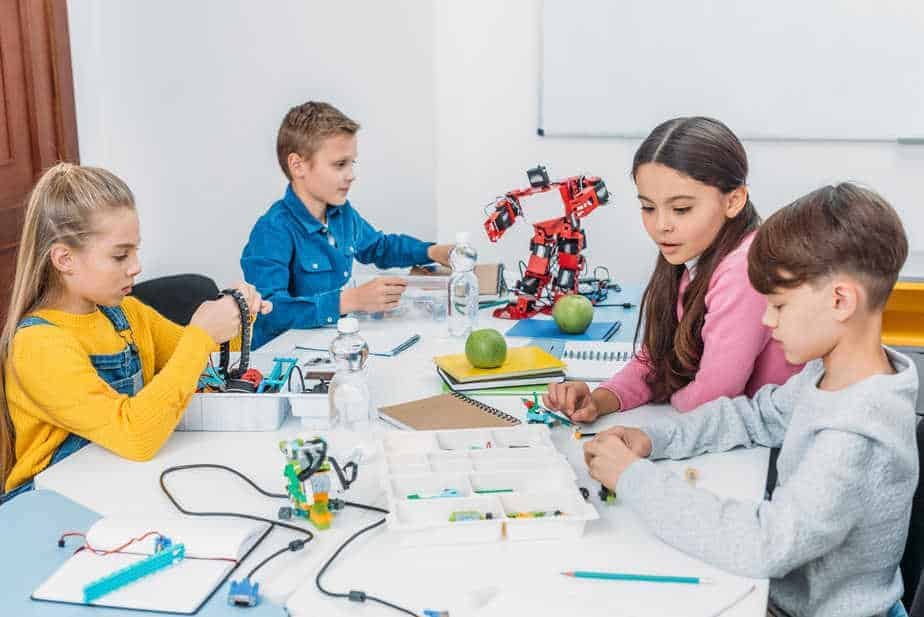
(This post may contain affiliate links that won’t change your price but will share some commission. As an Amazon Associate, I earn from qualifying purchases. Please read our disclosure policy for more information.)
After completing team projects, structured reflection sessions help students analyze what worked and identify areas for improvement, simultaneously building valuable social skills and metacognitive awareness.
A perfect example of these principles in action is the “Save the Egg” Challenge, where student groups collaborate to design parachutes that protect raw eggs dropped from a height, an activity that applies physics concepts, encourages design iteration and transforms failures into celebrated learning moments that students experience together.
4. Standards Alignment: Rigor Meets Relevance
Tying STEM to Next Generation Science Standards (NGSS) or Common Core ensures academic credibility while keeping lessons engaging through meaningful, standards-aligned activities. This approach maintains rigor while making learning relevant to students’ educational development.
Several practical steps can help implement this effectively. Teachers can crosswalk their curriculum by connecting projects like a water filtration project (NGSS: Engineering Design) with complementary skills like data analysis (CCSS Math). Using backward design, educators start with a standard (e.g., “Understand force and motion”) and then build an engaging STEM challenge around it (e.g., “Design a roller coaster for a marble”). To demonstrate progress, students can annotate how their work meets standards in portfolios or on bulletin boards, making their learning visible.
A helpful teacher hack leverages NGSS’s “Three Dimensional Learning” (practices, concepts, crosscutting ideas), which naturally aligns with project-based learning. For instance, when studying ecosystems, students could build a biodome and track species interactions, applying multiple dimensions of learning simultaneously. This approach seamlessly integrates standards with hands-on, inquiry-based STEM experiences.
5. Make It Fun: Hook Their Curiosity
When students associate STEM with joy, they naturally pursue it beyond classroom walls, developing lasting curiosity and passion. Several engagement boosters can help create this positive connection. Picture books like “Rosie Revere, Engineer” effectively introduce the engineering design process through whimsical storytelling, which teachers can extend with hands-on build-your-own invention activities that bring concepts to life.
For more interactive learning, a simple machines scavenger hunt lets students identify levers and pulleys throughout their school environment while challenging them to sketch potential improvements, such as brainstorming how to automate the cafeteria door. Gamification elements like digital badges for mastering STEM skills or hosting a “Shark Tank” pitch day for student inventions add excitement and motivation to the learning process.
The power of this approach shines in a case study where a 2nd-grade teacher used “The Most Magnificent Thing” to teach perseverance. After reading, students enthusiastically built prototypes using classroom scraps, learning to embrace mistakes as valuable parts of the creative process. This joyful, literature-connected STEM experience left students with both concrete skills and positive associations with engineering challenges.
3 No-Cost STEM Activities
- Index Card Towers: Challenge: Build a tower supporting a textbook using only 5 cards. STEM Concepts: Geometry, structural engineering.
- Nature Algorithms: Task: Write step-by-step instructions (like coding) for how a bee pollinates a flower. Tie to language arts and biology.
- Recycled Material Races: Goal: Create vehicles from bottle caps/straws, then test speed on ramps. Teaches physics and eco-consciousness.
Why These Strategies Matter
STEM education promotes equity by ensuring all students can engage with STEM concepts regardless of their school’s resources, while also preparing them for real-world problem-solving by mirroring how professionals work across disciplines through collaboration and iteration. What makes this approach particularly powerful is its accessibility. Even new STEM teachers can successfully implement these strategies without requiring extensive training or expensive equipment.
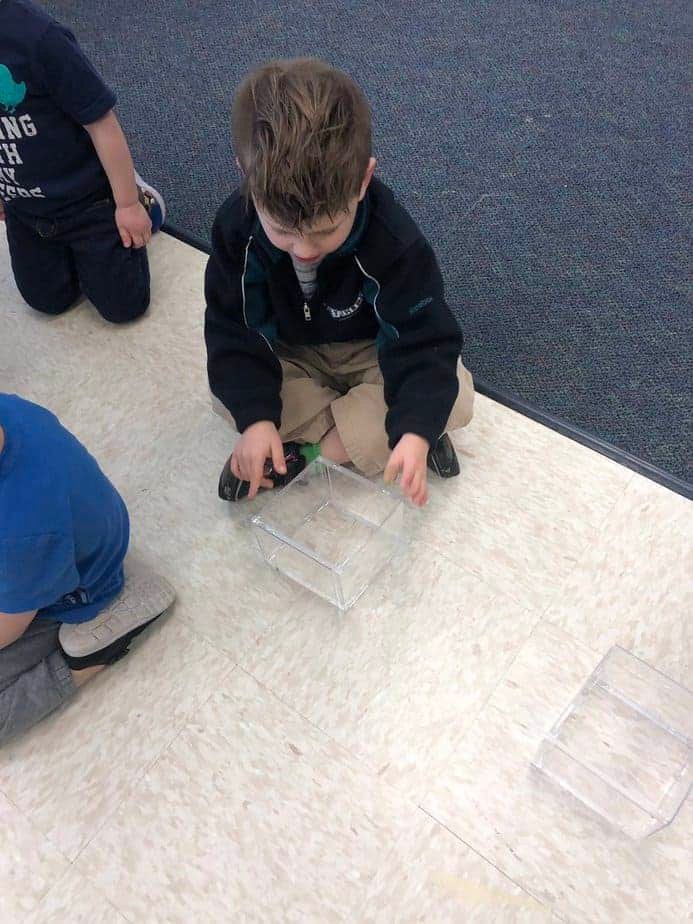
Ultimately, STEM education isn’t about having the fanciest tools or technology; it’s about cultivating a mindset of innovation and discovery. By starting with simple, low-cost activities, strategically incorporating available technology, and nurturing a classroom culture that values teamwork and curiosity, any educator, regardless of experience or budget, can create an engaging, effective STEM learning environment that empowers all students.
Preparing Students for the Future
The United States is shifting toward an innovation-driven economy, creating new STEM jobs that don’t even exist yet. By teaching STEM skills early, we prepare students to adapt to new ways of thinking.
STEM education extends far beyond the walls of a science classroom…it has a vital place in every subject area, from language arts to social studies and even physical education. The key to successful STEM integration lies in hands-on, experiential learning that bridges disciplines, making abstract concepts tangible and relevant to students’ lives.
Teachers don’t need expensive equipment or high-tech labs to bring STEM to life. Simple, low-cost activities and strategic curriculum adjustments can have a profound impact on student engagement and understanding. By incorporating everyday materials like index cards, recycled items, or basic digital tools, educators can create powerful learning experiences that develop critical thinking and problem-solving skills.
Perhaps most importantly, fostering a growth mindset transforms how students approach challenges. This mindset helps them view failures not as setbacks but as essential steps in the learning journey. When combined with interdisciplinary projects that connect STEM to real-world applications, this approach prepares students for a future where adaptability and creative thinking are paramount.
Whether through building simple machines in a math class, analyzing data trends in history lessons, or exploring the science behind art techniques, STEM principles can enrich all areas of study. The most effective STEM education happens when teachers focus on the process rather than just the product, encouraging curiosity, collaboration, and perseverance.
With thoughtful planning and a willingness to experiment, any educator can successfully weave STEM concepts into their existing curriculum, regardless of available resources or prior STEM experience. Ultimately, this approach not only makes learning more engaging for students but also helps them develop the versatile skill set they’ll need to navigate an increasingly complex world.
By embracing STEM as a teaching philosophy rather than just a subject area, educators can unlock new dimensions of learning across all disciplines. This prepares students for careers that may not even exist yet. The beauty of this approach is its accessibility. Great STEM teaching relies more on creativity and pedagogical flexibility than on budget or equipment, making it possible for any teacher in any classroom to make a lasting impact.
Final Thoughts
Whether you’re a new STEM teacher or looking to refresh your lesson plans, there are different ways to bring STEM learning into your classroom. From building blocks in elementary students’ lessons to standards-aligned lessons for older grades, the possibilities are endless.
As we’ve mentioned before we are currently preparing our students for jobs that simply do not exist yet. By embracing STEM programs, hands-on activities, and creative ways of teaching, educators can equip students with the STEM skills they need to succeed in an ever-changing world.
For more ideas, explore professional development workshops, STEM kits, or student projects that align with your classroom curriculum. The good news? You don’t need a STEM lab to start…just a willingness to try new approaches and inspire the next generation of innovators.
Some classroom STEM ideas for YOUR classroom. Click on the photo to learn more:
This article was originally published on December 7, 2018.

